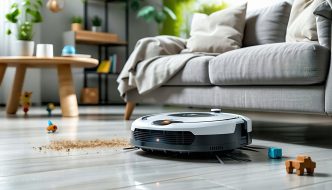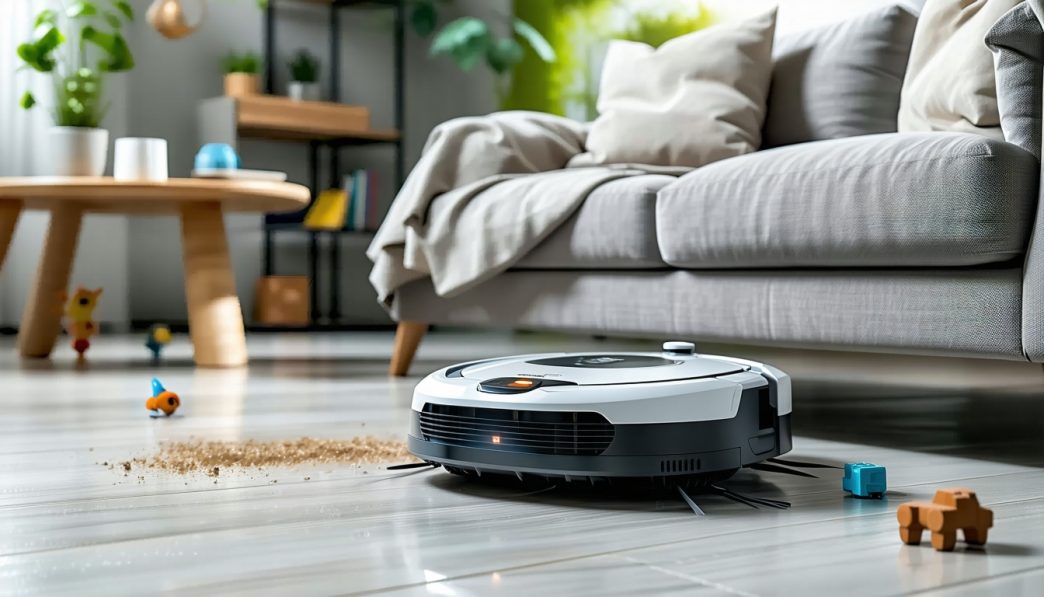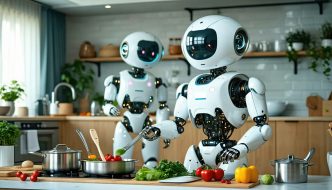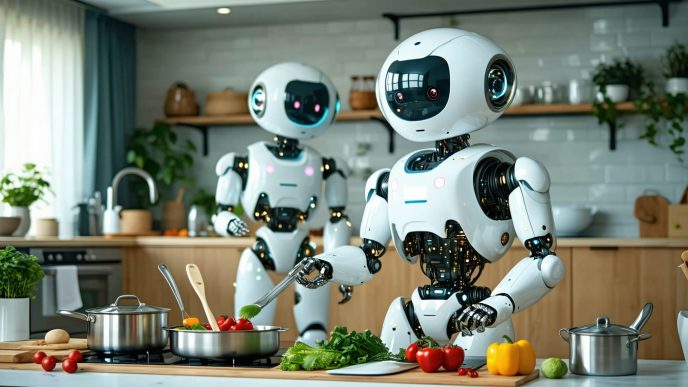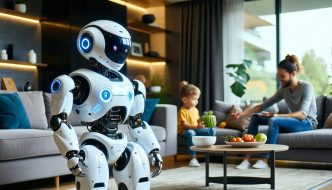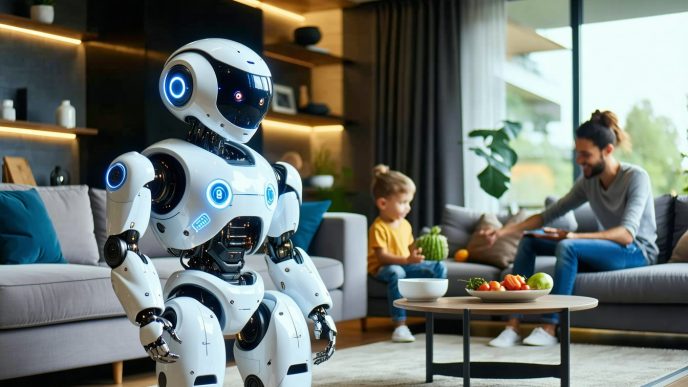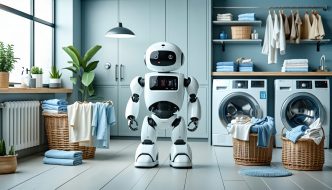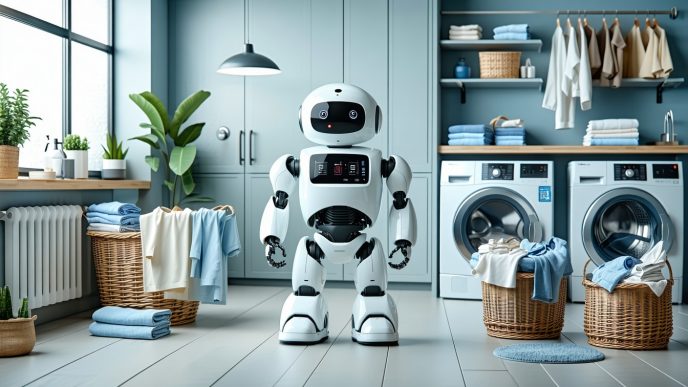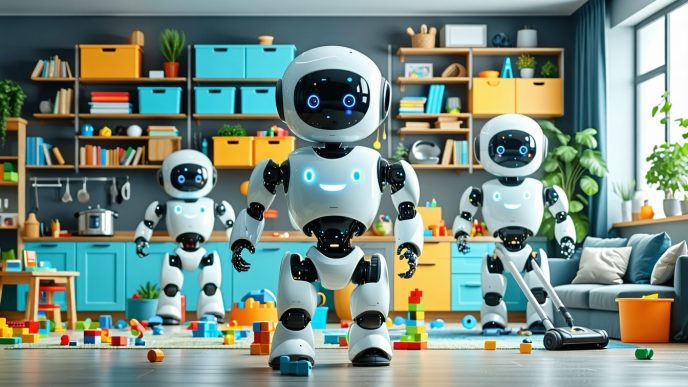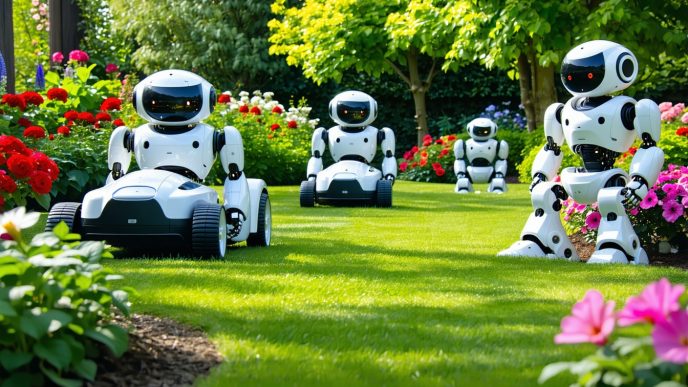Evolution of Robotic Floor Cleaners
The advancement of technology has paved the way for innovative solutions in household cleaning. Robotic floor cleaners, including vacuums and mops, have become increasingly popular among families, homeowners, and busy professionals.
The Rise of Robot Assistants in Household Chores
Robots for cleaning floors have evolved significantly, transitioning from simple automatic devices to sophisticated cleaning assistants. As families seek ways to reduce their workload and enhance their daily living through automation, the adoption of these robotic helpers has surged.
The following table illustrates the growth of interest in robotic cleaning solutions over recent years:
| Year | Global Market Size (in billion USD) | Growth Rate (%) |
|---|---|---|
| 2018 | 1.5 | 15 |
| 2019 | 1.8 | 20 |
| 2020 | 2.3 | 28 |
| 2021 | 3.5 | 35 |
| 2022 | 4.5 | 29 |
This increase indicates a robust demand for robotic cleaning devices, reflecting the desire for convenience and efficiency in managing household tasks.
Advancements in Cleaning Technology
The technology behind robotic vacuums and mops has seen remarkable advancements in recent years. Manufacturers are integrating features that enhance the capabilities of these devices, making them more effective at tackling a variety of cleaning tasks. Key advancements include:
- Improved Sensors: Enhanced obstacle detection and avoidance systems allow robots to navigate around furniture and other obstacles.
- Smart Mapping: Advanced mapping technology enables robots to create detailed maps of a home, enhancing navigation and cleaning efficiency.
- AI Integration: Artificial intelligence allows robots to learn from their environment, optimizing cleaning patterns and improving overall performance.
- Multi-surface Cleaning: Modern robots can transition seamlessly between different floor types, such as carpets and hardwood, ensuring suitability for all areas of the home.
These technological developments not only increase the effectiveness of robots for cleaning floors but also contribute to their integration into broader household task robots solutions. Families can now rely on a diverse range of automated assistants, including those designed for laundry, dishwashing, and even organizing. The future of household automation offers exciting possibilities for reducing daily chore burdens and enhancing living spaces.
Robotic Vacuums
Robotic vacuums have transformed the way households tackle floor cleaning tasks. These automated devices provide an efficient solution for maintaining cleanliness, making them a popular choice among families, busy professionals, and tech-savvy individuals.
Features and Functionality of Robotic Vacuums
Robotic vacuums come equipped with a variety of features designed to facilitate effective cleaning. The most common functionalities include:
| Feature | Description |
|---|---|
| Suction Power | Varies based on model; some have adjustable settings for different floor types. |
| Dirt Detect Sensors | Automatically increase suction in areas with more dirt or debris. |
| Scheduling | Users can set cleaning schedules for convenient operation, even when away from home. |
| Automatic Recharge | Returns to its docking station when low on battery and resumes cleaning afterward. |
| Filter Systems | Most robotic vacuums include HEPA filters, which capture allergens and improve air quality. |
The advanced technology integrated into robots for cleaning floors allows for thorough dust and debris pickup, which makes them effective for households with pets or children.
Navigation and Mapping Capabilities
One of the most critical aspects of robotic vacuums is their navigation and mapping capabilities. These systems enable the devices to navigate the layout of a home efficiently and avoid obstacles. Key features include:
| Navigation Feature | Description |
|---|---|
| Random Navigation | Basic method where the robot moves in a random pattern; may miss spots. |
| Gyroscope and Accelerometers | Help to understand the orientation and movement, improving navigation accuracy. |
| LIDAR and Cameras | Advanced sensors that create detailed maps of the environment, allowing for systematic cleaning paths. |
| Virtual Boundaries | Users can set up no-go zones to keep the robot away from certain areas. |
Effective navigation is crucial for maximizing the coverage of cleaning areas. For families and homeowners looking for efficient solutions to manage household chores, these robots seamlessly integrate into daily routines. Their mapping capabilities ensure that every corner of the home is reached, providing a thorough clean without requiring constant oversight.
Through advancements in features and navigation technology, robotic vacuums stand out as essential tools in the realm of household task robots, aiding in maintaining a clean and organized home environment.
Robotic Mops
Robotic mops are increasingly becoming an essential part of modern home cleaning solutions. Designed to streamline the mopping process, these devices offer a blend of technology and convenience to help maintain clean floors without the manual labor traditionally involved in mopping.
Features and Functionality of Robotic Mops
Robotic mops come equipped with an array of features that enhance their functionality and effectiveness in keeping floors clean. Key features include:
- Automated Cleaning Paths: Robotic mops utilize advanced algorithms to create efficient cleaning patterns, reducing missed spots and optimizing the time spent cleaning.
- Water Control Systems: Many models feature adjustable water flow settings, allowing users to customize the amount of water used during cleaning based on floor type and level of dirt.
- Multi-Surface Capability: These devices are designed to clean various floor types, including tile, hardwood, and vinyl, making them versatile household helpers.
- Obstacle Detection: Built-in sensors enable robotic mops to navigate around furniture and avoid falls, ensuring safe and thorough cleaning sessions.
| Feature | Description |
|---|---|
| Automated Cleaning Paths | Efficient cleaning patterns |
| Water Control Systems | Adjustable water flow for different surfaces |
| Multi-Surface Capability | Works on various floor types |
| Obstacle Detection | Navigates around furniture without hazards |
Benefits of Robot Mop Integration in Daily Cleaning Routines
Integrating robotic mops into daily cleaning routines provides several advantages, especially for busy families, homeowners, and professionals looking for efficiency.
- Time Savings: Robotic mops allow users to focus on other tasks while the device cleans independently, making it an excellent time-saver in hectic households.
- Consistency in Cleaning: With scheduled cleaning options, users can ensure their floors are regularly maintained, which helps to prevent the buildup of dirt and grime.
- Less Physical Effort: By automating the mopping process, individuals can reduce physical strain and fatigue associated with manual floor cleaning, benefiting those with mobility challenges.
- Enhanced Cleanliness: Regular use of robotic mops contributes to improved hygiene, especially in high-traffic areas, ensuring that floors are consistently clean.
For more insights into household cleaning solutions, check our articles on household task robots and other specific applications like robots for laundry assistance and robots for dishwashing and kitchen cleaning.
Hybrid Cleaning Robots
Hybrid cleaning robots have emerged as versatile all-in-one solutions for maintaining clean homes. These innovative devices combine the functionalities of robotic vacuums and mops, catering to the diverse needs of families, homeowners, and busy professionals looking for effective ways to automate household chores.
All-in-One Cleaning Solutions
Hybrid robots streamline floor cleaning by integrating both vacuuming and mopping capabilities into a single unit. This dual functionality allows them to tackle various types of messes, from dust and debris to sticky stains on hard surfaces. Homeowners can benefit significantly from these machines, as they save time and reduce the workload associated with maintaining cleanliness.
The following table illustrates the key features typically found in hybrid cleaning robots:
| Feature | Description |
|---|---|
| Vacuuming Capability | Allows for suction of dirt, dust, and pet hair |
| Mopping Functionality | Provides a wet cleaning option for hard floors |
| Smart Sensors | Detects different surfaces for optimal cleaning |
| Scheduling Options | Enables users to set cleaning times automatically |
| Compact Design | Easy to store and navigate in tight spaces |
Integration of Vacuuming and Mopping Functions
Hybrid cleaning robots effectively switch between vacuuming and mopping tasks without the need for manual intervention. This integration enhances household cleaning efficiency, as users can program the robots to perform multiple cleaning cycles in one go.
This functionality is particularly beneficial for families with children and pets. The robots can easily handle various messes that occur throughout the day, minimizing the amount of hands-on cleaning required. Many hybrid robots also come equipped with advanced features like app connectivity for remote operation and monitoring. This allows users to control and schedule cleaning tasks directly from their smartphones, making it convenient to maintain a clean living space.
For additional automation in household tasks, families may also consider household task robots that assist with laundry, kitchen cleaning, and other chores, complementing the capabilities of hybrid cleaning robots.
Smart Home Integration
The integration of robotic cleaners within smart home systems has transformed household management. As families seek efficiency and convenience, these automated devices are becoming essential tools for modern living.
IoT Connectivity and Home Automation
Robotic vacuums and mops equipped with Internet of Things (IoT) connectivity allow for seamless integration into home automation systems. This connectivity enables devices to communicate with one another, providing homeowners with enhanced control over their cleaning routines.
Key benefits of IoT-enabled cleaning robots include:
| Feature | Description |
|---|---|
| Remote Access | Users can monitor and control their robots from anywhere using mobile apps. |
| Automated Scheduling | Cleaning tasks can be pre-scheduled for optimal convenience. |
| Real-time Updates | Users receive notifications about cleaning progress and maintenance needs. |
| Integration with Other Smart Devices | Cleaning robots can work alongside other smart appliances for increased efficiency. |
These features enhance the experience of using household task robots, allowing users to stay engaged with their home environment without requiring constant oversight.
Voice Control and App Integration for Seamless Operation
Voice control capabilities have further simplified interactions with robotic cleaners. Many of these devices support popular voice assistants, enabling users to issue commands such as “start cleaning” or “return to the dock” hands-free.
The integration of user-friendly apps plays an important role in managing robotic devices. These applications allow users to:
| Functionality | Description |
|---|---|
| Customize Cleaning Preferences | Adjust settings like cleaning paths, suction power, and mop dampness. |
| Monitor Cleaning Status | View a map of the cleaned areas and real-time statistics on cleaning performance. |
| Access Maintenance Alerts | Receive notifications when the robot needs maintenance, such as emptying the dustbin or replacing filters. |
The combination of voice control and app integration enhances the usability of robots for cleaning floors. Families and busy professionals can streamline their household management, freeing up time for other important tasks. For more on the impact of automation, explore our article on future of household automation.
Future Trends in Robotic Floor Cleaners
As the landscape of household cleaning continues to evolve, several key trends are shaping the future of robotic floor cleaners. Two significant areas of development are the integration of artificial intelligence (AI) and machine learning, as well as a heightened focus on sustainability and eco-friendliness.
AI and Machine Learning in Cleaning Robots
The application of AI and machine learning is transforming the capabilities of robots for cleaning floors. These technologies enable cleaning robots to analyze their environment, recognize obstacles, and learn from past cleaning experiences. As a result, they can optimize their cleaning paths, improving efficiency and coverage.
| Feature | Description |
|---|---|
| Smart Navigation | Robots can create detailed maps of the home, adjusting their cleaning patterns based on layout and furniture placement. |
| Adaptive Learning | With machine learning, robots refine their performance over time, becoming more effective in repeated cleaning tasks. |
| Obstacle Recognition | Advanced sensors allow robots to identify and navigate around obstacles, reducing the likelihood of collisions and stuck situations. |
| Task Scheduling | AI can learn user preferences for cleaning times, allowing robots to operate on tailored schedules. For more on this, see scheduling tasks for household robots. |
This intelligence not only enhances cleaning performance but also integrates well with smart home systems, making these robots an integral part of household automation. More information on household robots can be found in our article on household robots working with smart homes.
Sustainability and Eco-Friendly Innovations
As consumers become increasingly environmentally conscious, the development of eco-friendly robotic floor cleaners is gaining momentum. Manufacturers are focusing on sustainable materials and energy-efficient technologies to create greener cleaning solutions.
| Innovation | Description |
|---|---|
| Energy Efficiency | Newer models consume less electricity while maintaining powerful cleaning capabilities. |
| Biodegradable Components | Some devices incorporate biodegradable or recyclable materials, reducing their environmental impact. |
| Water Conservation | Robots designed for mopping may utilize advanced systems that minimize water usage while still achieving effective results. |
| Eco-Friendly Cleaning Solutions | These robots may be compatible with environmentally safe cleaning products, promoting a healthier home environment. |
Adopting these sustainable practices not only benefits users but also aligns with broader global initiatives for eco-friendly living. For those interested in other facets of automation, see our article on the future of household automation.
The ongoing development in AI, sustainability, and eco-friendly practices highlights how robotic floor cleaners are evolving to meet modern household demands, ultimately aiming to save time and reduce the workload for families, homeowners, and busy professionals.

